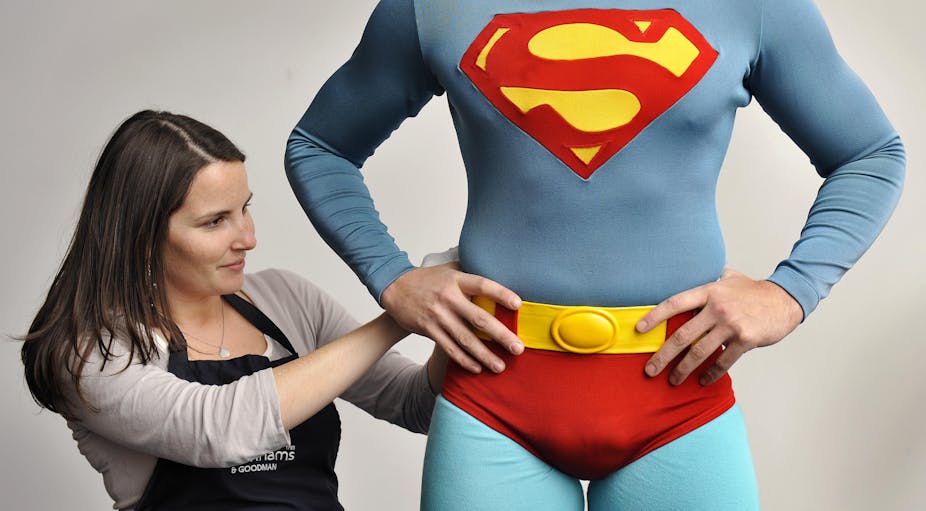Watching films such as Superman Returns or The Day after Tomorrow, you would have seen dramatic sequences of surging water and crumbling buildings.
While doing so, mathematics was probably the last thing you thought about; but without it, scenes of this nature would be virtually impossible.
Take the 2006 film Superman Returns. In one scene, a giant spherical object smashes into a water tank releasing a huge amount of water (see below).

Traditionally, the only possible way to create this kind of sequence would be to use small models – which produce unrealistic results. Or we could create a computer simulation.
Swapping droplets for particles
These days, one of the most popular methods for simulating water is to replace fluid with millions of individual particles within a computer simulation.
And the way these particles move is determined by an algorithm that my colleagues and I invented to simulate the formation of stars in our galaxy’s giant molecular clouds.
The method is known as Smoothed Particle Hydrodynamics (SPH) and the use of SPH in Superman Returns is the work of an American visual effects company called Tweak.
Superman Returns certainly isn’t the only film to feature SPH fluid simulations: think of Gollum falling into the lava of Mount Doom in Lord of the Rings: Return of the King; or the huge alligator splashing through a swamp in Primeval.
These particular scenes are the work of people at a Spanish visual effects company called NextLimit, who received an Oscar for their troubles.
How does SPH work?
Rather than trying to model a body of water as a whole, SPH replaces the fluid with a set of particles. A mathematical technique then uses the position and masses of these particles to determine the density of the fluid being modelled.
Using the density and pressure of the fluid, SPH makes it possible to map the force acting on each particle within the fluid. This technique provides results quite similar to the actual fluid being modelled. And the more particles used in the simulation, the more accurate the model becomes.
Beyond the basics
In Superman Returns, gravity also affects how the body of water behaves (the water spills out of the water tank) and SPH can easily be adapted to accomodate this.
In addition, fluids often need to flow around solid bodies such as rocks and buildings that might be carried, bobbing along, by the flow. The SPH method can be easily extended to handle this combination of solid bodies and fluids by adding sets of particles to the equation, to represent the solid bodies.
These adjustments and extensions to SPH can be made to produce very realistic-looking results.
In industry, SPH is used to describe the motion of offshore rigs in a storm, fluid flow in pumps, and injection moulding of liquid metals. In zoology, it’s being used to investigate the dynamics of fish.
SPH and the stars
As hinted at above, it’s not just water and its inhabitants that can be modelled using this technique.
SPH simulations of star formation by Matthew Bate, from the University of Exeter, and Daniel Price, of Monash, have been able to predict the masses of the stars, and the number of stable two- and three-star systems that form from a typical molecular cloud.
In the case of stable two-star systems (known as binaries) SPH can predict the shape of the orbits in good agreement with astronomical observations.
To get this level of accuracy, millions of particles are used in the SPH calculation, and the motion of these particles is calculated on a number of computer systems that work together in parallel.
SPH is also the method of choice for following the evolution of the universe after the Big Bang. This evolution involves dark matter and gas, and the simulations have one set of SPH particles for the dark matter and one set for the gas.
An advanced SPH code – known as Gadget – used for this purpose was developed by Volker Springel. The code enables astrophysicists to predict the way galaxies form and their distribution in the universe, including the effects of General Relativity.
But for non-astrophysicists, admittedly, the movies may be more of a draw.
So next time you’re watching a film and you see large swathes of water in unusual places or doing incredibly destructive things, think about maths for a moment: without it, such breathtaking scenes would be virtually impossible.

